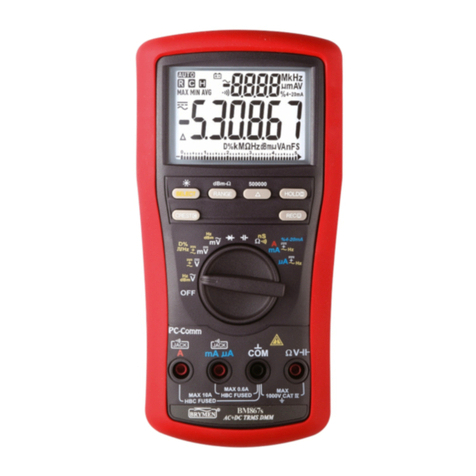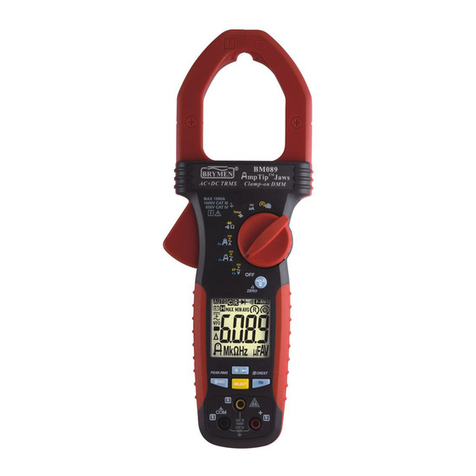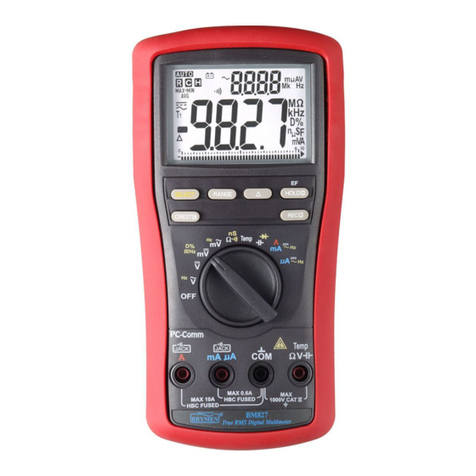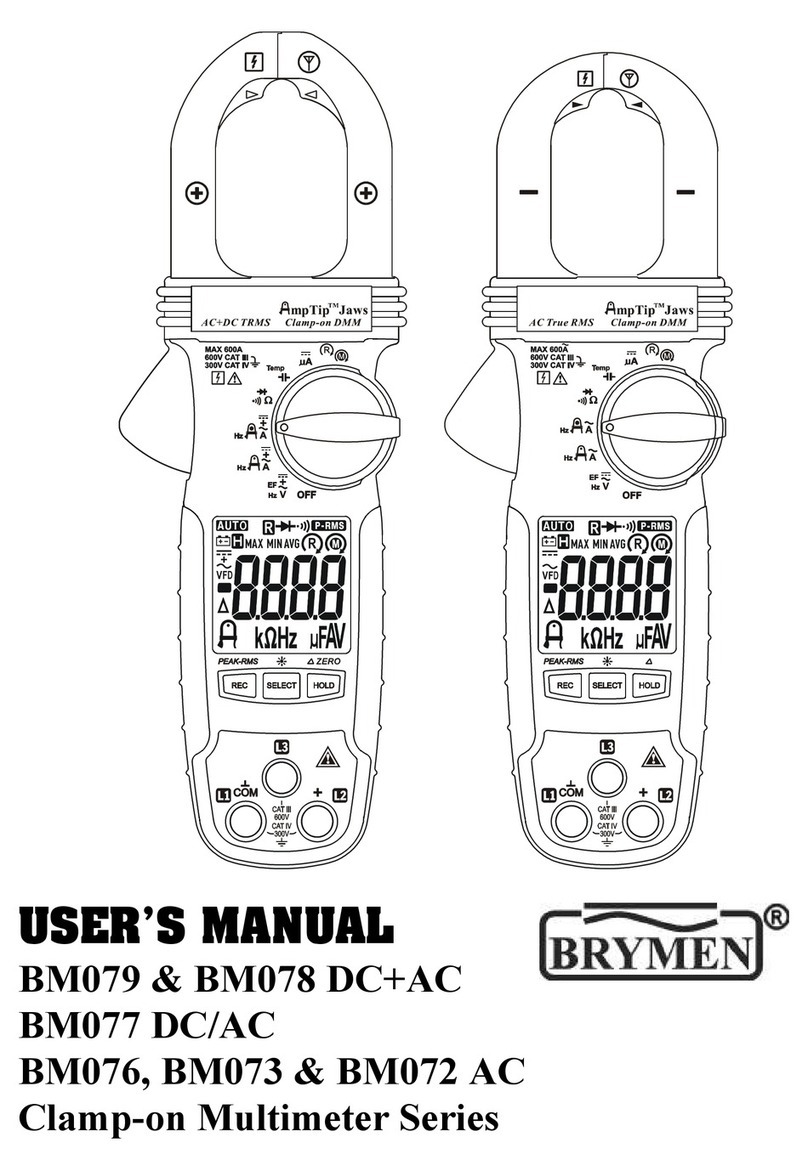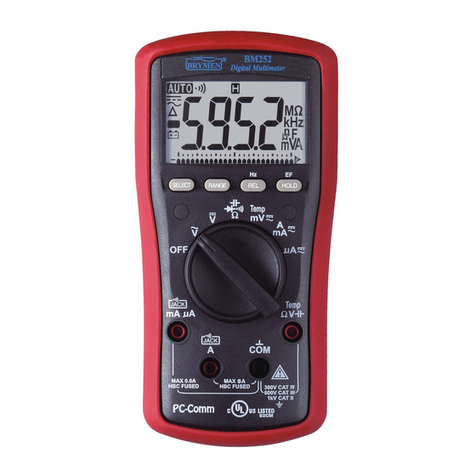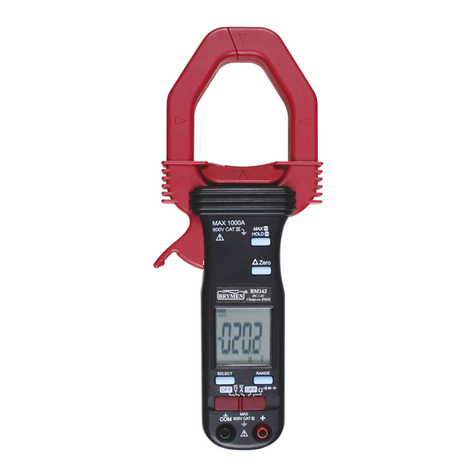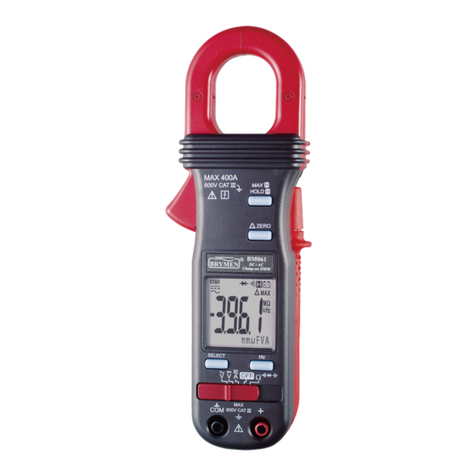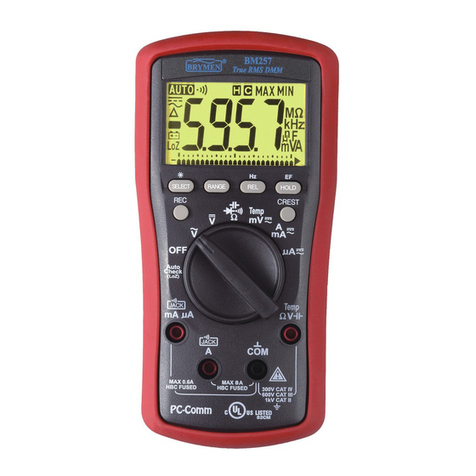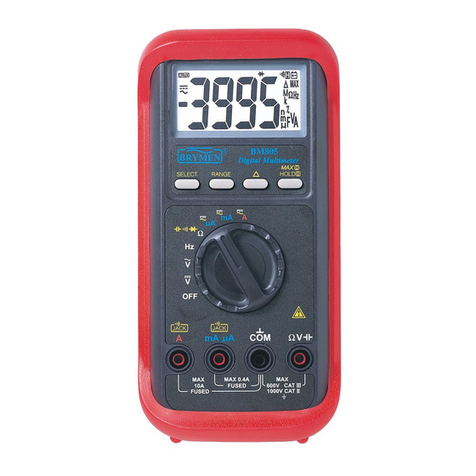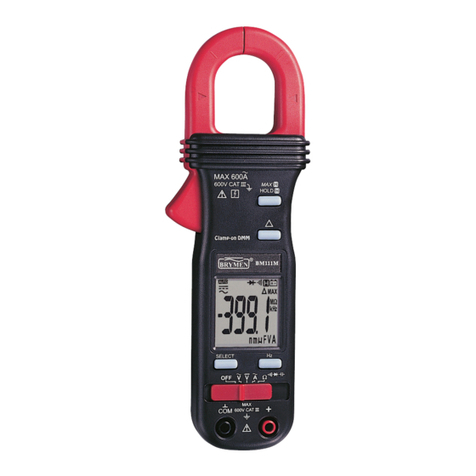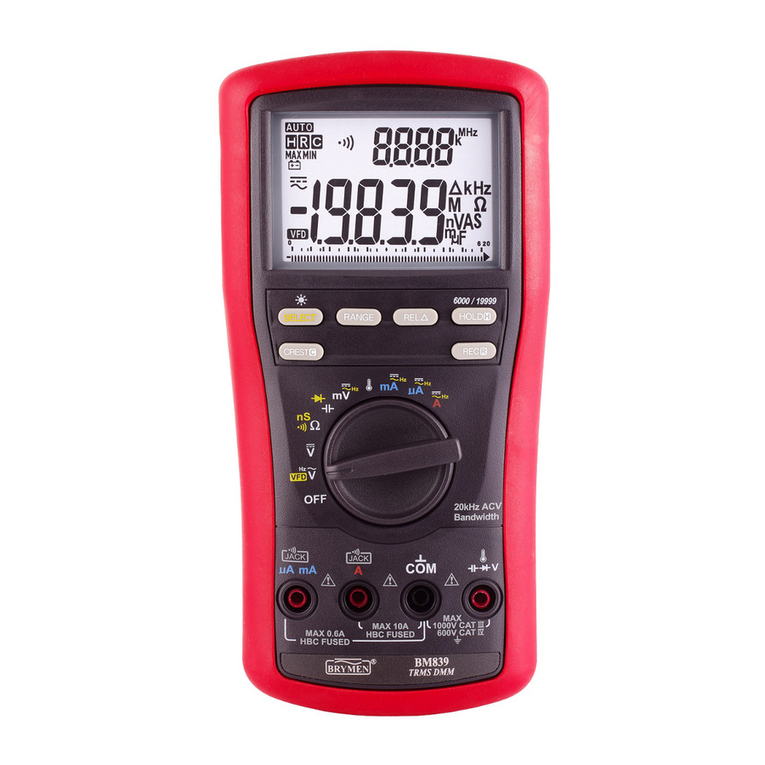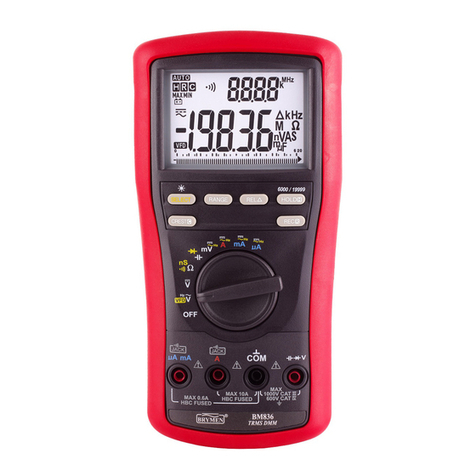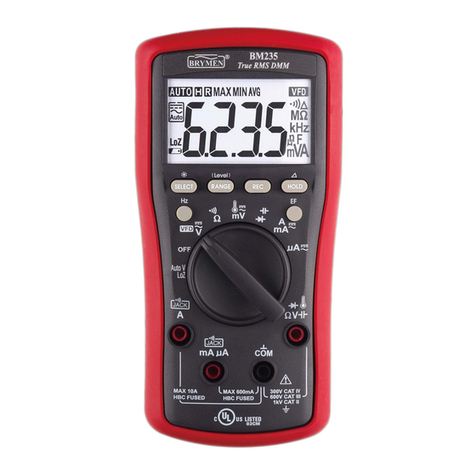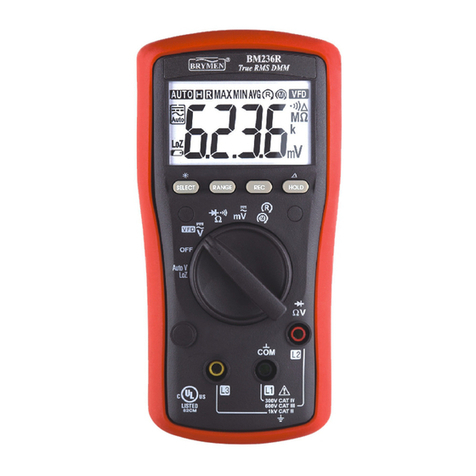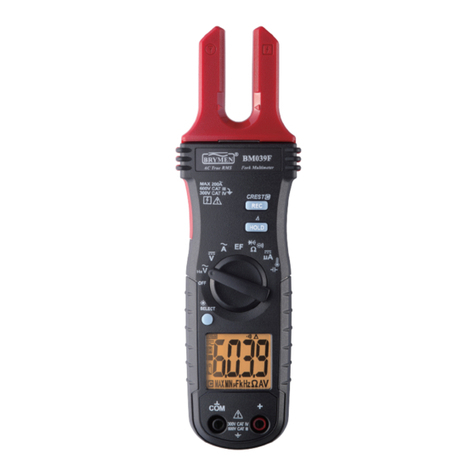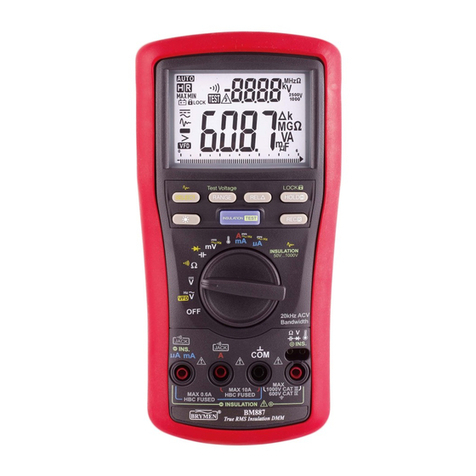
1
This manual is applicable to all meter protection versions or otherwise specified
1) SAFETY
Terms in this manual
WARNING identifies conditions and actions that could result in serious injury or even
death to the user.
CAUTION identifies conditions and actions that could cause damage or malfunction
in the instrument.
This manual contains information and warnings that must be followed for operating the
instrument safely and maintaining the instrument in a safe operating condition. If the
instrument is used in a manner not specified by the manufacturer, the protection
provided by the instrument may be impaired. The meter is intended only for indoor use.
The meter (all versions) is protected, against the users, by double insulation per
EN61010-1 and IEC61010-1 2nd Edition (2001) to CAT III 1000V & CAT IV 600V. The
meter (all versions) also meets UL3111-1(1994)* and CSA C22.2 No. 1010-1-92* to
CAT III 1000V.
Standard-version BM810 & BM510 series Terminals (to COM) ratings:
V : Category III 1000 Volts AC & DC, and Category IV* 600 Volts AC & DC.
A / mAµA : Category III and Category IV* 500 Volts AC and 300 Volts DC.
X-version BM810X & BM510X series (Protection-reinforced) Terminals (to COM) ratings:
V / A : Category III 1000 Volts AC & DC, and Category IV* 600 Volts AC & DC.
mAµA : Category III and Category IV* 600 Volts AC and 300 Volts DC.
CF-version BM810CF & BM510CF series (Highest-Protection) Terminals (to COM) ratings:
V / A / mAµA : Category III 1000 Volts AC & DC, and Category IV* 600 Volts AC & DC.
*Category IV safety standard (for DMMs) was first released in IEC61010-1 2nd Edition in
year 2001, and was yet an UL published standard at the time this manual was written.
Per IEC61010-1 2nd Ed. (2001) Measurement Category
Measurement Category IV (CAT IV) is for measurements performed at the source of
the low-voltage installation. Examples are electricity meters and measurements on
primary overcurrent protection devices and ripple control units.
Measurement Category III (CAT III) is for measurements performed in the building
installation. Examples are measurements on distribution boards, circuit- breakers,
wiring, including cables, bus-bars, junction boxes, switches, socket-outlets in the fixed
installation, and equipment for industrial use and some other equipment, for example,
stationary motors with permanent connection to the fixed installation.
Measurement Category II (CAT II) is for measurements performed on circuits directly

